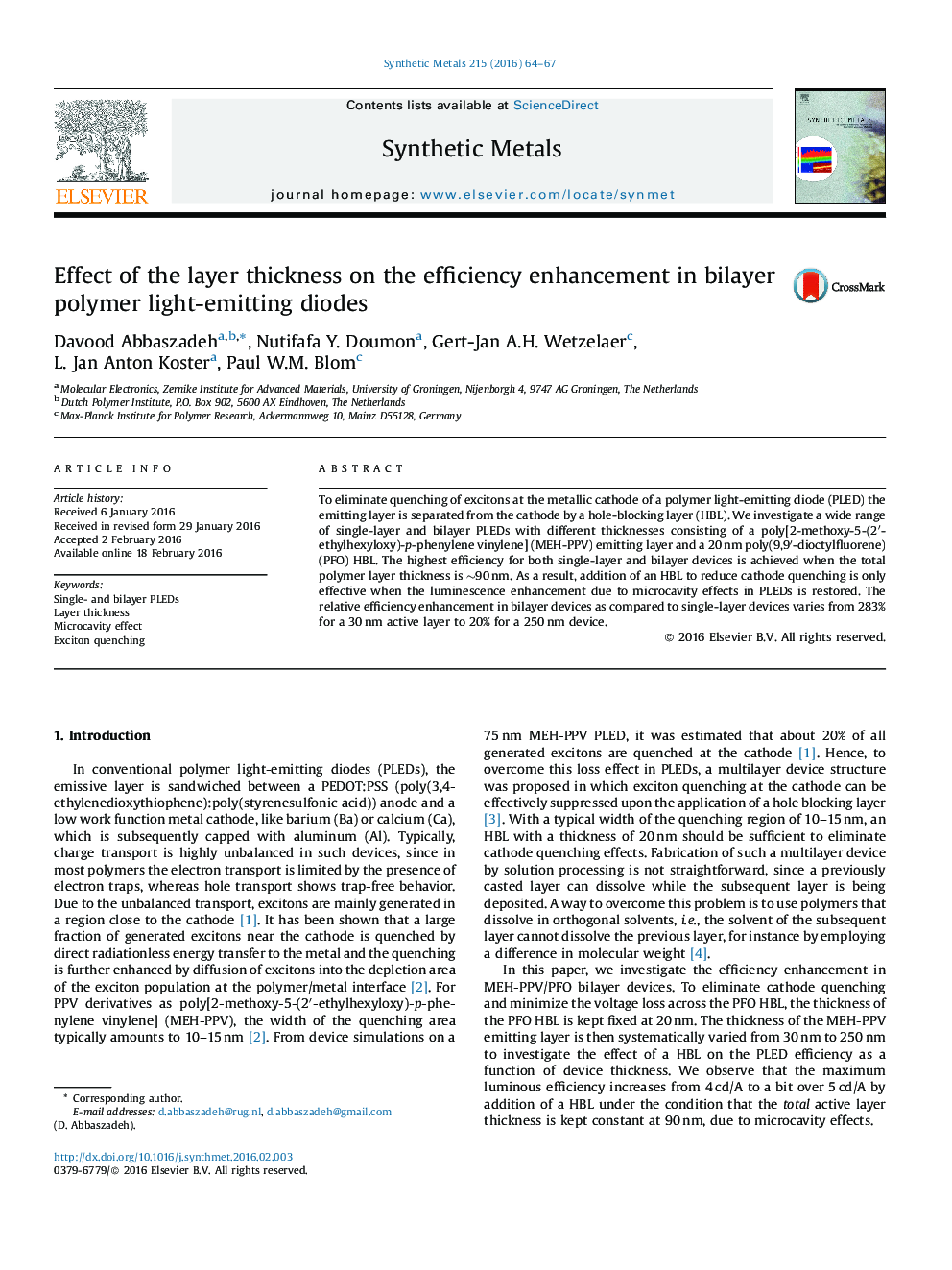| Article ID | Journal | Published Year | Pages | File Type |
|---|---|---|---|---|
| 1440250 | Synthetic Metals | 2016 | 4 Pages |
•Addition of an HBL to reduce cathode quenching is only effective when the luminescence enhancement due to microcavity effects in PLEDs is restored.•The addition of an HBL not only reduces exciton quenching, but also enhances radiative recombination in favor of trap-assisted recombination.•Efficiency enhancement in bilayer devices as compared to single-layer devices varies from 283% for a 30 nm active layer to 20% for a 250 nm device.
To eliminate quenching of excitons at the metallic cathode of a polymer light-emitting diode (PLED) the emitting layer is separated from the cathode by a hole-blocking layer (HBL). We investigate a wide range of single-layer and bilayer PLEDs with different thicknesses consisting of a poly[2-methoxy-5-(2′-ethylhexyloxy)-p-phenylene vinylene] (MEH-PPV) emitting layer and a 20 nm poly(9,9′-dioctylfluorene) (PFO) HBL. The highest efficiency for both single-layer and bilayer devices is achieved when the total polymer layer thickness is ∼90 nm. As a result, addition of an HBL to reduce cathode quenching is only effective when the luminescence enhancement due to microcavity effects in PLEDs is restored. The relative efficiency enhancement in bilayer devices as compared to single-layer devices varies from 283% for a 30 nm active layer to 20% for a 250 nm device.
